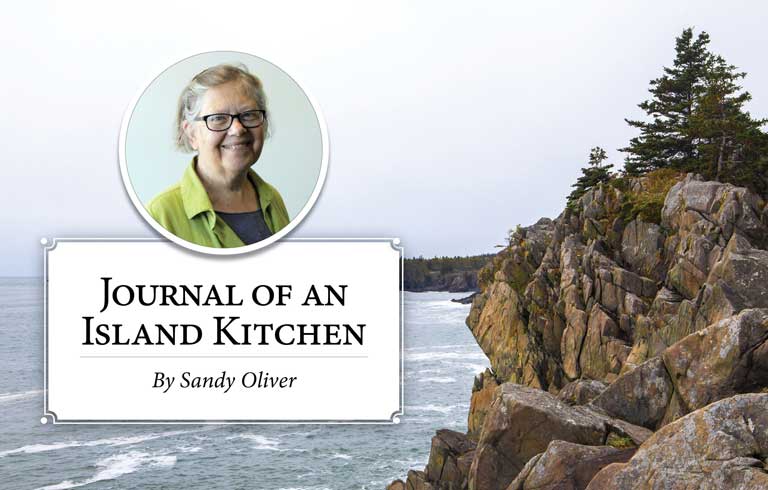Flavor matters so much when we eat. Cooks sample as they go along to make sure the seasoning is just right, that the balance of salt, sweet, spicy, sour, bitter, and umami is pleasing.
Still, each of us experiences flavor in highly personal ways, hence, “De gustibus, non disputandum est.” In other words, when it comes to taste, there’s no agreement possible among us all about what tastes good. The last column here dedicated to beets underlined that for me: so many comments from readers fell on one side or the other of the love them/hate them line.
Sometimes taste buds have nothing to do with whether something tastes good or not. A family story about my grandparents’ early encounter with Italian spaghetti sauce reported that when Grandma got the recipe from her immigrant neighbors, “of course” she left out the garlic. My Yankee grandpa didn’t want to smell like a Catholic immigrant. By the time I was ready to add garlic to dishes I cooked, thank goodness that prejudice had evaporated.
One young friend sprinkled her avocado toast with eye-popping quantities of red pepper flakes.
Nowadays, the younger people in my life have a higher tolerance for capsicum heat than many in my generation. One young friend sprinkled her avocado toast with eye-popping quantities of red pepper flakes. Chili crisp, hot sauces of all sorts, and salsas sporting dangerous sounding names adorn their tables. If I were to eat those, all I’d experience is pain.
It turns out that actually I am missing out on many of the flavors possible to detect in the food I eat. I learned this at a food professionals conference I attended a number of years ago, at a session led by taste scientist Linda Bartoshuk.
One part of her presentation included having the participants chew a piece of filter paper and write down their reactions. I looked around the room while I chewed away on my little piece of paper, tasting nothing, and noted faces scrunched in distaste.
When the time came to discuss this part of the exercise, Bartoshuck asked how many in the room had tasted nothing. A scattering of hands went up, including mine. Apparently, we were supposed to have detected bitterness.
It turns out that those of us who detected nothing have a recessive gene that would have otherwise provided us with more taste buds on our tongues and more sensors on each one. It helped explain why I like dark chocolate, strong coffee, and gin.
This was a startling revelation. I suppose the reason I could cook food that other people with more taste buds than I had could enjoy was that by the time I seasoned it enough that I could actually taste it, it must have been really pretty flavorful.
Over the past few years, I’ve noticed that I am losing more capacity for taste. At first I thought it was minty toothpastes that I was supersensitive to, but shifting to fruit flavored ones didn’t help much. Having COVID can diminish taste and smell but my lack appeared before I ever caught it. Apparently, alarmingly, it is also a symptom of Parkinson’s disease.
Some flavors still register. Dark chocolate, Scotch, gin, smoked ham, cheese, especially cheddar, ginger, blue cheese, coffee ice cream, but less so my morning coffee, even dark roast, unless I add a little milk. Garlic and onion penetrate. Celery, olives, and most pickles taste good. So do deviled eggs, mostly because of the mayonnaise.
Salt and sweet endure. Of course. Wouldn’t you just know that cake, cookies, brownies, salty pretzels, potato chips, corn chips, the whole family of reprocessed grains and vegetables, blown into funny shapes and heavily salted would continue to please?
Lots of vegetable charm has faded; I used to relish a first summer cucumber sandwich; this year’s didn’t cut it. I eat fresh garden vegetables as an exercise in enjoying a good memory.
Texture has taken over. A recent New Yorker cartoon showed a child sitting at the kitchen table with one her mom’s friends while mom pours pasta squiggles into a pan with a caption beneath saying, “I vary her diet with a variety of pasta shapes.”
It’s amazing how much one can enjoy different pasta shapes. I love mezze rigatoni and big fat bucatini. Chewy barley or farro is more fun than rice. A lightly steamed green bean that squeaks a little when you bite into it is wonderful. Crunchy is good whether the exterior of a fishcake or oven roasted tofu. Chewy bread with a crust that resists the teeth is terrific.
The general trajectory of this particular personal trend towards tastelessness is a little dismal. Just figure on feeding my doddering self with a plateful of brownies and a glass of Scotch.
Sandy Oliver is a food historian who gardens, cooks, and writes on Islesboro. She may be contacted at SandyOliver47@gmail.com.





